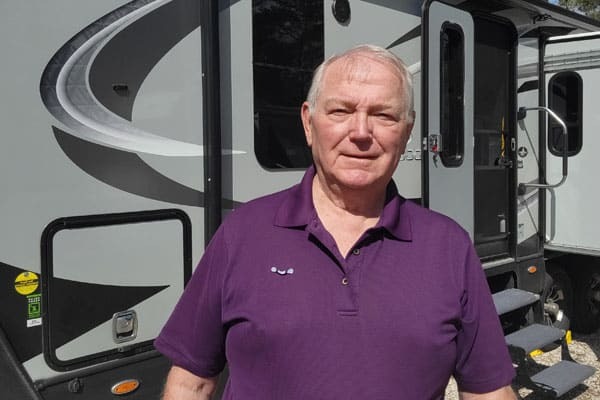ABOUT THE BUSINESS
- First location started by Ray Bauman in 1985
- Ray was a founding member of ABKA
- Owned for 37 years
- Services provided: Boarding, Daycare, Bathing, Activities
- 2 buildings, 29,000+combined SF
- 162 enclosures
- 38 full and part-time staff.
Acquired By:

In the early 90s, Ray had the opportunity to take a large step forward, after being approached by a consolidator out of New York City. The timing was good, so he took the deal and became Vice President of Operations for the corporate office. But he soon became disillusioned. In the rush to buy up facilities, the quality of the acquisitions was often questionable. “I got the nickname ‘Bulldozer’ because all I wanted to do was bulldoze the terrible facilities they were buying up,” Ray remembers. Unfortunately, all was not as presented by that company and a parting of the ways occurred. As part of the settlement, Ray took back his boarding kennel and got to work expanding his business again.
Despite that experience, Ray is not against consolidation in the pet resort industry. “It depends how the consolidation is done. The buyer of my two resorts is doing a good job and consolidating in a constructive manner. They actually care about the industry, the clients, and their pets.”
After expanding the Toledo location in the ‘90s, Ray was looking to expand his concept to a new town. By now in his mid 60s, Ray bought a nice piece of land in Ann Arbor, MI, and opened a new facility in 2008, just as the Great Recession hit. Economic conditions, and a number of other factors, made retiring impossible for at least a few more years.
Always trying to improve, Ray’s aim was to design the ultimate pet care facility. So, he came up with another new design for the Ann Arbor facility. It was based on his Central Ave facility in Toledo, but it had a second story that staff walked upstairs to get to. There was no chain link in the whole place. It had glass, bright colors and a large skylight covering the entire courtyard.
“Then I did the same thing for the cats. At that time, people were boarding cats in small cages. Cats are worse than dogs for airborne diseases. So, I created cat suites while at Central and continued at Ann Arbor. I created tall individual glass suites with shelves that cats could climb up on and with the litter box below the floor, out of sight of the clients and vented to the exterior of the building.”
Boarding was the initial business at each facility and then around 15 years ago, daycare services started. By the time he sold in 2022, Ray had between 100 – 150 dogs per day at each facility.
“Running the business, it didn’t take me to long to realize you have to get to a certain volume of business to get cashflow and income to be able to afford to add staff. My wife started working at the first business before I could quit my construction job, but we grew it to be able to have managers and assistant managers.”
Ray estimates getting Ann Arbor up and running cost him another 10 years of his life but in the final seven years of owning it, he had semi-retired and worked a lot from home. After successfully guiding the businesses through the covid pandemic in 2020, Ray decided it was time to retire. He reached out to Teija, of PET|VET M&A, Sales & Advisory, whom he had met at numerous conferences over the years when speaking on kennel design and construction.
This selling process was the final education in his business experience. Getting the accounts into the format the buyer wanted was no small feat and felt invasive at times, even though Ray had run a tight ship with nothing to hide. “Buyers look at your tax returns first, and then look back. I look at my P&L, and then look forward. I had let my accountant handle the tax returns. If my accountant had set up my chart of accounts in a different way from the start, it would have been easier at the end. Teija and her staff spent considerable effort reconciling our P&L to our tax returns. A buyer wants to know they are not going to get a bad surprise, so I can see it from their perspective.”
Ray’s business philosophy of having nothing to hide and having kept his eye on the P&L kept him in good stead and the business sold successfully to a consolidator in 2022. He is grateful for PET|VET’s help.
“I can’t imagine ever trying to sell a business like this by myself. There are too many legal and tax issues when a business gets to the size that mine was. Selling a business is not like selling a house or a car. Having a professional with you is necessary! Yes, having a broker costs money, but what Teija’s work got me more than covered her costs. If I attempted to do it myself, I would have ended up with significantly less money and may not have sold it.”
Ray’s son now owns the original location, where he rebuilt with a similar design concept to the other two. “He’s done an excellent job with his design and management of his business.”
Despite all the ups and downs, Ray has enjoyed his role in the pet resort industry. “The pet industry is a very resilient industry. If you manage your business well and live within your means, you will do ok.
“I have no regrets selling,” he says from his RV. “This business is 7 days a week, 365 days a year, and double duty on holidays. It is nice not having that. I’ve still got my health (knock on wood), so I better do what I want to do, and I’d better do it quick.”


